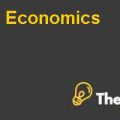
Pan Boricua: developing a marketing strategy for the Hispanic market in the United States
Background
The case “Pan Boricua: developing a marketing strategy for the Hispanic market in the United States”, basically discusses the growth opportunity for Pan Boricua that is looking to decide the future strategy for the company. Pan Boricua Inc. was established in 2001 where they decided to export bread made in Puerto Rico to the United States market. The mission for the company was to provide customers with excellence, service and freshness while making unique taste of the land for consumption in the Latin markets of the country. The idea of Pan Boricua was to produce bread and other similar products that have the taste and tenderness of the Puerto Rican products. Therefore, to gain the advantage of an untapped or un-catered market, the company entered as the first company to export such products, which were made of Puerto Rican taste. As the case states Puerto Rican population is on a steady growth in the United States market, which provides ample opportunity for the company to expand itself in the bread manufacturing category. Keeping this in mind, the two partners of the company, Franco and Rivera have to decide the future market strategy for the company. Pan Boricua has to decide whether they need to expand in the markets they are already available in or look to enter those markets where the brand is not at a strong position or the third option that is available is that the company has to explore and distribute the manufactured bread into areas where Pan Boricua is not currently available.
Problem Statement
As the case states, the company has been doing quite well in the market where Pan Boricua has established itself as a recognized brand as it is producing quality products and it has associated itself with all reliable distributors working with the company. Although, this is an opportunity for the company but it has also brought the opportunity for the company to evaluate the way to move forward in a strategic manner and to determine specific localities to in fact strengthen sales where the company can start new business. This is the problem and also an opportunity for the company.
PEST Analysis
Political Factors:
The political factors that have influenced or played a vital role in the industry or for the company Pan Boricua have been approved by the United States Food and Drug Administration Department, which has been looking after the quality of products that have been sold by various companies in the confectionary market or the bakery market. The government rules and regulations to look after health standards for every individual have been quite strict and have to be followed by each member of the industry. This fact has made product quality and standards go up alarmingly.
Economical Factors:
The economical factors for the industry are quite positive. As the case discusses, the bread industry had total revenue of $34 billion in 2007. Along with this, the industry is on growth with a list of new features or products being introduced by manufacturers in the industry. People in the industry were unwilling to pay higher prices for normal products; however, they were keen to pay extra for additional features or differentiated products. People will buy more products because of the increase in incomes levels for individuals in the United States. The projections indicate that 13.5 million Hispanic households controlled $670 billion in personal income as per 2010 statistics. Along with this the purchasing power increased to $397 billion by 2010.
Social Factors:
The social factors contributing to the industry will include an increase in number of Hispanic population by 2.6 percent in the next 10 years. Along with this, Puerto Rican population represented a total of 5.5 percent of the total population for the United States. The average trip by a Hispanic to a store was around 26 trips, which is thrice the general population in the United States. The people who preferred such products manufactured by Pan Boricua are quite keen to spend on quality of food and are willing to pay extra for the food quality.
Technological Factors:
The technological factors for the industry include the introduction of various new products that can make the industry players make attractive new products for the social community. Along with this, Pan Boricua has introduced no slice products too.
Porter five Forces Model
Bargaining Power of Buyer: High
The bargaining power of supplier for the bakery industry is high. The reason it is high because as the case states many companies were present in the industry, which were offering low cost products to customers that made the industry highly competitive for the industry players. Along with this, the customer was not willing to pay higher prices for bakery and confectionary products...............
This is just a sample partial case solution. Please place the order on the website to order your own originally done case solution.
Two inexperienced, but strongly committed to, entrepreneurs face troubles of the new enterprise: export dough from Puerto Rico to cities in the United States with a large number of Puerto Rican immigrants who yearn nostalgically for his beloved pot sobao (bread with vegetable shortening). With thousands of Puerto Ricans who live and / or move to the United States, and after a few cases of fraud on the part of partner businesses, they think about how to take advantage of what seems to be business opportunities outside their home Caribbean. These entrepreneurs are faced with several challenges: 1) to identify opportunities for training and to get personally involved in demanding export 2) differentiation and brand positioning in a crowded market. This nostalgic feel enough motivation to engage customers with the brand? 3) Is it a substitute for the establishment of market data and technical and economic solution. "Hide
by Victor Quinones, Julia Sagebien, Marisol Perez-Savelli, Eva Perez, Jennifer Catinchi Source: Richard Ivey School of Business Foundation 11 pages. Publication Date: August 17, 2009. Prod. # 909A20-PDF-ENG












